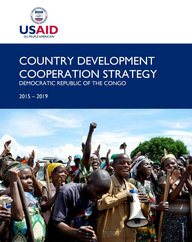The macroeconomic environment in the Democratic Republic of Congo (DRC) has markedly improved in recent years, yet the lives of most Congolese have not. In 2013, the DRC gross domestic product (GDP) per capita was $288, the lowest in the world and well less than half of its 1960 value. Approximately 80 percent of the population lives in extreme poverty with the majority engaged in subsistence agriculture. The DRC has the highest number of undernourished people in Africa and the highest prevalence of malnutrition in the world. Only 14 percent of Congolese households have access to electricity.
The Democratic Republic of Congo (DRC) was once renowned in Africa for its network of clinics, quality of physicians, and primary health care system. In the past three decades, the political and economic collapse of the country has had a dramatic impact on this system. Hospitals and clinics lack personnel and equipment and often run out of critical medicine and supplies. An estimated 70 percent of Congolese have little or no access to health care. Strengthening the health care system is critical to improving the health of Congolese citizens.
Since the early 1990s, illegal exploitation of minerals from artisanal mining in the Great Lakes region of Central Africa has been used to finance armed groups and criminal elements within state security forces, exacerbating ongoing conflict. Recently, international and domestic advocacy efforts have encouraged positive reforms within the government of the Democratic Republic of Congo, regional governments, and the local and global private sector. U.S.-listed companies sourcing tin, tantalum, tungsten and gold (known collectively as the “3T’s and gold”) from the region are now required to audit their supply chains and publicly report usage of conflict minerals. The governance, security, and implementation challenges necessary for these reforms must be adequately addressed for the minerals trade to contribute to the formal economy and inclusive development in the DRC.
Since 2002, the United States Government has been a major donor in the response to and prevention of sexual and gender-based violence (SGBV) in the Democratic Republic of Congo (DRC). Deep-seated gender discrimination, harmful cultural practices, and the low social status of women and girls in the DRC contribute to high rates of SGBV. Continued population displacement, insecurity, and conflict in eastern DRC perpetuate the cycle of violence against women and girls, though most perpetrators are community members, not associated with armed groups or conflict.
The east of the Democratic Republic of Congo (DRC) has remained volatile for the last 20 years. Between 2015 and 2019, USAID/DRC will invest approximately $997 million, subject to the availability of funds, – roughly two-thirds on humanitarian aid and a third on development assistance -- to strengthen the foundation for a durable peace in eastern DRC.










Comment
Make a general inquiry or suggest an improvement.